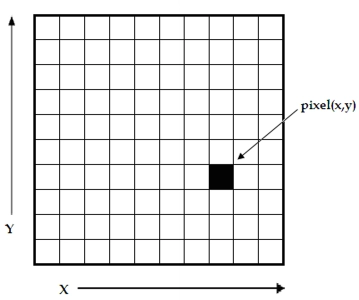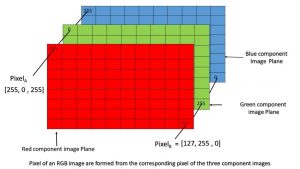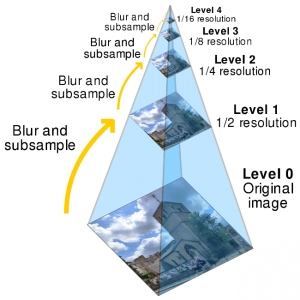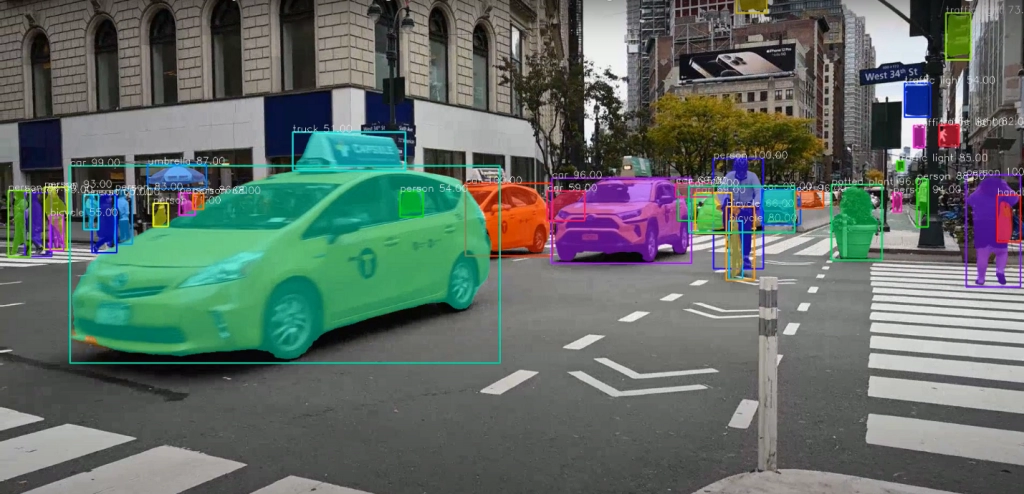What is Image Processing?
IT What is Image Processing?
Deep learning has tremendously impacted various technology fields in the last few years. Computer vision is one of the hottest topics in this popular industry. Computer vision is the ability of computers to understand images and videos without human intervention. Self-driving cars and facial recognition all rely on computer vision. The main core of computer vision is image processing; For this reason, the course of image processing has a special place among engineering courses.
What is the Image?
Before we get into image processing, we first need to understand what constitutes an image. An image is displayed with its dimensions (height and width) based on the number of pixels. For example, if the dimensions of an image are 500 x 400 (width x height), the total number of pixels in the image is 200,000. To be more precise, an image can be represented as a two-dimensional function F(x,y), where x and y are spatial coordinates. The amplitude of F at a specific x, the y value, is known as the image intensity at that point. If x, y, and the range value are limited, we call it a digital image.

Pixels are elements of an image that carry information about intensity and color. An image can also be displayed in 3D, where x, y, and z are converted to spatial coordinates. The pixels are arranged in a matrix, in this case, which is known as an RGB image.

Simply put, a pixel is a point in an image that takes on a particular shade, opacity, or color, usually represented by one of the following:
Grayscale: A pixel is an integer with a value between 0 and 255 (0 is completely black, and 255 is completely white).
RGB: A pixel comprises three integers between 0 and 255 (the integers represent the intensity of red, green, and blue colors).
RGBA: The suffix A is added to RGB, indicating the image’s opacity.
What is image processing?
Pictures show the world. Each image has its own story and can contain very important information that is useful in many ways. This information can be obtained with the help of an image processing technique—which limits converting an image into digital form and performing certain tasks to obtain useful information. The string of operations performed in each image pixel is needed to process the image. The image processor performs the first operation on the image pixel by pixel. When this is done completely, it performs the second operation, and so on. The image processing system usually considers all images as 2D signals.
Image processing is the main part of computer vision, which plays an important role in many fields, such as robotics, self-driving cars, and object recognition. It lets us change and manipulate thousands of images and extract information. Python is one of the most widely used programming languages for it. Its amazing libraries and tools like Open CV, Scikit-Image, Scipy, Pillow, Matplotlib, SimpleITK, Numpy, and Mohatas are very important and popular in image processing.
Suppose you want to learn it in a specialized and professional way and earn money from it. In that case, Faradars provides you with various comprehensive pieces of training from beginner to advanced level that you can get easily and at the lowest cost.
The main goals of image processing:
- Visualization: Finding objects that are not visible in the image
- Recognition: recognizing or identifying objects in the image
- Sharpening and restoration: Provides a quality image of the original image
- Pattern recognition: identifies and measures different patterns in the image.
- Retrieval: Browsing and searching images from a large database of digital images that are similar to the original image
Basic steps of image processing
The steps for image processing are as follows:
1. Image acquisition
Image acquisition is the first step in image processing. This step is also known as pre-processing in the course of it. This step involves retrieving the image from a source (usually a hardware source).
2. Image Enhancement
Image enhancement is improving and highlighting some features of interest in an image of poor quality and blurry. This step includes changing the brightness, contrast, etc.
3. Image Restoration
Image restoration is the process of improving the appearance of an image. However, image restoration is performed using specific mathematical or probabilistic models, unlike image enhancement.
4. Color Image Processing
Color image processing includes several color modeling techniques in the digital domain. This step has become important due to the effective use of digital images on the Internet.
5. Wavelets and Multiresolution Processing
Wavelets are used to display images in different degrees of resolution. Images are divided into wavelets or smaller regions for data compression and pyramid representation.

6. Compression
Compression is a process used to reduce the storage space required to store an image or the bandwidth required to transmit it. This is especially true when the image is for use on the Internet.
7. Morphological Processing
Morphological processing is a set of processing operations to transform and gradually transform one image into another based on its shape.
8. Segmentation
Segmentation is one of the most difficult steps in it. This part includes dividing an image into its components or objects.
9. Representation and Description
Our images must be displayed and described in a way that facilitates the process of successful object recognition. After an image is divided into regions in the segmentation step, each region is suitably prepared for further computer processing. Representation deals with image and regional features, and description deals with extracting quantitative information that helps distinguish one class of objects from another.

10. Recognition
This step assigns a label to an object based on its description.
Applications of image processing
The course of image processing has many useful applications, some of the most important of which are as follows:
1. Medical image recovery
Image processing has been widely used in medical research and has made treatment procedures much more efficient and accurate. For example, it can be used for the early detection of breast cancer using a complex nodule detection algorithm in breast scans. Since medical use requires highly professional image processors, these applications require significant implementation and evaluation before use.
One of the best tools this is MATLAB software. To learn how to work with MATLAB for iu, refer to the following link, which includes comprehensive training videos:
2. Traffic measurement
A video image processing system or VIPS (video image processing system) is used in traffic sensors. This system includes imaging, telecommunication, and image processing systems. When recording video, a VIPS has multiple detection zones that signal “on” whenever a vehicle enters the zone and then signal “off” whenever a vehicle leaves the detection zone. These detection zones can be set for multiple lanes and can be used to detect traffic at a specific location. In addition, it can automatically record the license plate, recognize the type of vehicle, monitor the driver’s speed on the highway, and more.

3. Image reconstruction
Image processing can be used to restore and fill in missing or damaged parts of an image. Image processing systems are widely used with existing photo datasets to create newer and better versions of old and damaged photos.
4. Face recognition
One of the most common applications of image processing that we use today is face recognition. Face recognition follows deep learning algorithms, where the machine is first trained with the specific features of the human face, such as the shape of the face, the distance between the eyes, etc. Once the machine learns these features, it finds all the objects in an image that resemble a human face. Facial recognition is a critical tool used in security, biometric authentication, and filters in most social media apps.

Advantages of image processing course
The implementation of image processing techniques has greatly impacted many technologies. Here are some of the most useful benefits of image processing:
- The digital image can be available in any desired format (enhanced image, x-ray, photo negative, etc.).
- Image processing helps to improve images.
- Information can be processed and extracted from images for machine interpretation.
- Image pixels can be manipulated to any desired contrast.
- Images can be saved and retrieved easily.
- Image processing allows easy electronic transfer of images to third-party providers.
Software used in image processing
Most of us are confused about choosing the right tool for our work. Tools help you practice your craft, but they don’t make you a good craftsman. A good craftsman has various tools in his pocket and carefully selects the right tool for the job. Also, we often see wars over programming languages; But the truth is that a professional programmer should choose a language suitable for his task.
In computer vision, we face similar choices. Which programming language and tools should a computer vision engineer or programmer learn? C++, OpenCV, Python, or MATLAB? The good news is that we have limited options to choose from when it comes to! A decade ago, there were no good libraries for computer vision. If you wanted to learn computer vision, all you had to do was pick up a book and start coding your little library of computer vision algorithms. Fortunately, things are much better now.
Various software is used for image processing, the most famous of which are MATLAB and Python. MATLAB offers the best software and programming language for performing image processing operations, which, in addition to coding, ass various tools and filters. Still, Python is easier and has a better user interface.
If you’re new to programming, it’s better to take the easy route and choose a tool you’re familiar with. If you are a Python developer, use OpenCV with Python. If you know C++, use C++ with OpenCV. You may look to apply this newly acquired knowledge in the real world. You may be thinking of a new side project or looking for a new career in this field. (sometimes literally) it pays to know how to choose.
Conclusion
The growth of deep learning technology has led to the increased use of computer vision in projects, thus increasing the need for image processing tools. The demand for professionals with key skills in deep learning technologies is increasing rapidly every year. If you want to learn more about the benefits of image processing and deep learning, this tutorial is a great way to get you on the right track. Using extracurricular online training, you will master all the concepts of the image processing course and implement deep learning algorithms. To start a successful career path in image processing, even today and online, visit the following link:

